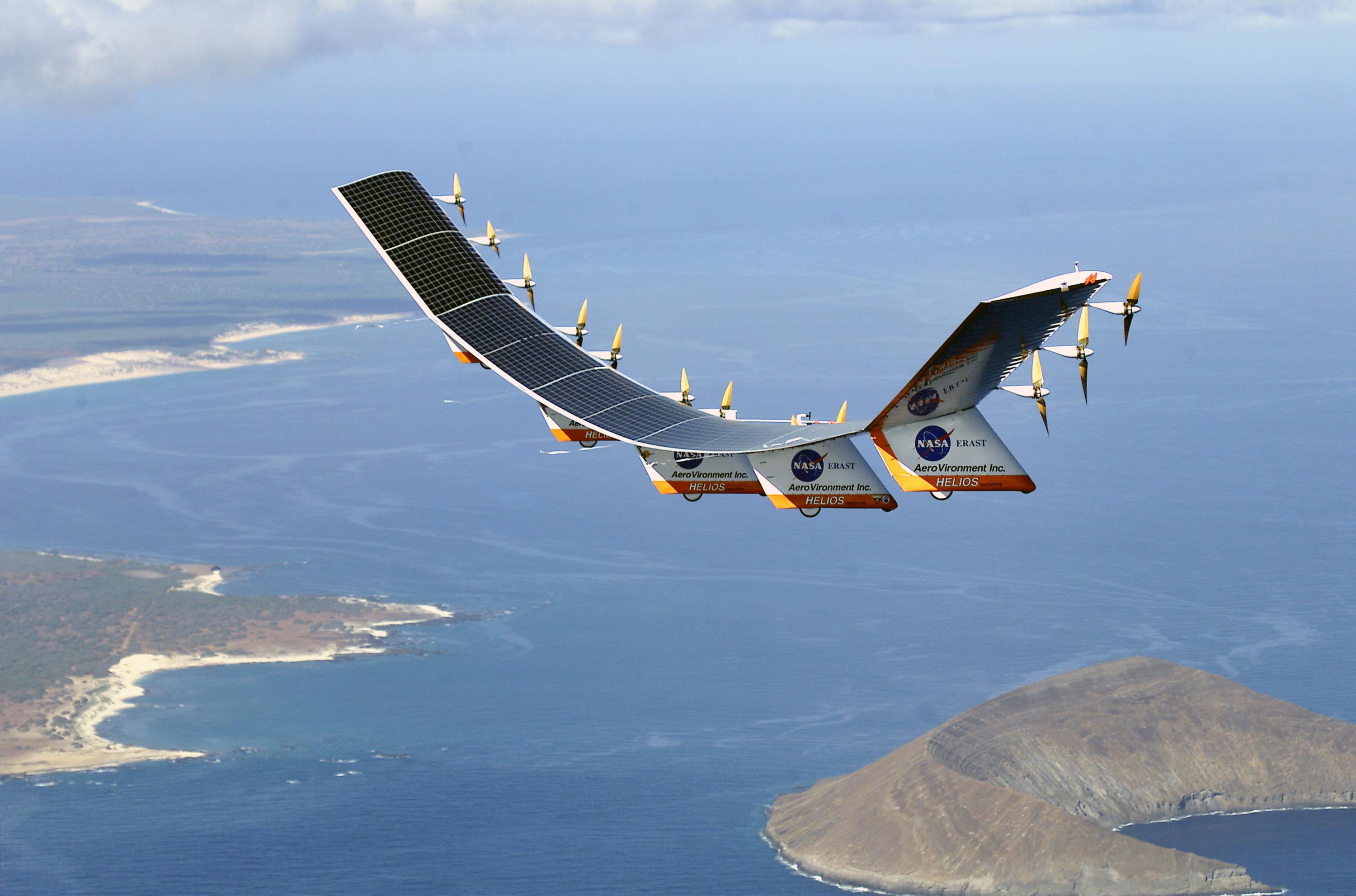
Produced by SunPower, Inc., these solar arrays convert about 19 percent of the solar energy they receive into electrical current and can produce up to 35 kw at high noon on a summer day. The additional wingspan increased the area available for installation of solar cells and improved aerodynamic efficiency, allowing the Helios Prototype to fly higher, longer and with a larger payload than the smaller craft.ĭuring 2000, more than 62,000 bi-facial silicon solar cells were mounted on the upper surface of Helios' wing. In upgrading the Centurion to the Helios Prototype configuration, AeroVironment added a sixth wing section, a fifth landing gear pod and a differential Global Positioning Satellite (GPS) system to improve navigation, among other improvements.
Helios solar flight history series#
The remotely piloted Helios Prototype first flew during a series of low-altitude checkout and development flights on battery power in late 1999 over Rogers Dry Lake adjacent to NASA's Dryden Flight Research Center in the Southern California desert. The craft has a wingspan of 247 feet, 41 feet greater than the Centurion, 2 1/2 times that of the Pathfinder flying wing, and longer than the wingspans of either the Boeing 747 jetliner or Lockheed C-5 transport aircraft. The Helios Prototype is an enlarged version of the Centurion flying wing that flew a series of test flights at Dryden in late 1998. A follow-on to the Pathfinder and Pathfinder-Plus solar aircraft, the Helios Prototype soared to 96,863 feet altitude in August 2001, setting a new world record for sustained altitude by winged aircraft, powered only by energy from the sun.ĭeveloped by AeroVironment, Inc., of Monrovia, Calif., under NASA's Environmental Research Aircraft and Sensor Technology (ERAST) project, the unique craft was designed to demonstrate two key missions: the ability to reach and sustain horizontal flight near 100,000 feet altitude on a single-day flight, and to maintain flight above 50,000 feet altitude for almost two days, the latter mission with the aid of an experimental fuel cell-based supplemental electrical system now in development. The Helios Prototype is the latest and largest example of a slow-flying ultralight flying wing designed for high-altitude, long-duration Earth science or telecommunications relay missions. Navy's Pacific Missile Range Facility PMRF Kauai Hawaii Niihau Lehua The 18-hour flight was a functional checkout of the aircraft's systems and performance in preparation for an attempt to reach sustained flight at 100,000 feet altitude later this summer. Navy's Pacific Missile Range Facility on Kauai, Hawaii, July 14, 2001. The solar-electric Helios Prototype flying wing is shown near the Hawaiian island of Niihau during its first test flight on solar power from the U.S. The Helios Prototype flying wing is shown near the Hawaiian island of Niihau during its first test flight on solar power from the U.S. Navy's Pacific Missile Range Facility.ĭryden Home > Collections > Photo Home > Helios > Photo # ED01-0209-4 Wings are covered with special designed and produced plastic sheet.Helios ED01-0209-4: The Helios Prototype flying wing is shown near the Hawaiian island of Niihau during its first test flight on solar power from the U.S. Materials: All main parrts of the plane are made of carbon fibres and styrofoam. The highest speed is 270 km/h.įlight height: Maximal flight height is 30000 m - typical height depends on flight mission and it is typical 15000 to 22000 m.įlight: The anticipated authonomy in the future together with fuell cells will reach for uninterupted flights (several months of authonomy).

Speed: Typical flight speed is 30 to 40 km/h. Fuell cells will be used as main energy source in the dark in the future. Energy source in the dark are lithium batteries. Length of both propeller blades is 1,7 m.Įnergy source: Bifacial solar cells - dimmensions 1.25" x 2.75" (Front side efficiency 22 %, backside efficiency 11 %) placed on transparent wings. The weight of each motor is less than 5 kg. Propulsion: 14 DC brushless electric motors (the power of each motor is 1,5 kW) with two blades. Height: 2 m, without upper blades of the propellers

World record by a winged aircraft of flying at a sustained altitude above 96,000 feet (29,250 m) for 40 minutes. On 13 August 2001, the Helios Solar Powered Aircraft set an unofficial


Helios is a pilotless solar powered airplane developed by NASA and AeroVironment


 0 kommentar(er)
0 kommentar(er)
